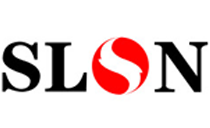The Application of RFID Technology in Drug Traceability
Drug traceability is an important component and link of drug regulation. The establishment and improvement of a drug traceability system have enabled the traceability of drug sources, destinations, emergency recalls, and emergency allocation, providing necessary guarantees for the safe use of drugs by the people.
In 2016, China proposed to improve the food and drug traceability system and issued relevant policies - to achieve drug traceability by identifying one-dimensional codes for electronic drug supervision. At the same time, in recent years, other countries around the world have also introduced corresponding policies and various recognition technologies (such as one-dimensional barcode, two-dimensional matrix code, OCR text recognition, and RFID recognition) to strengthen drug serialization management and prevent pharmaceutical product counterfeiting.
The European drug serialization management system can recognize all drug packaging and can identify drugs at any stage of the manufacturing and distribution chain. When drugs are placed in the first packaging unit (primary packaging), they have a manufacturer's batch number. This number must accompany the entire circulation cycle of drug packaging and be able to be identified on various packaging units, including transparent packaging and conventional drug packaging (secondary packaging) that can be purchased in pharmacies, combinations of multiple packaging (tertiary packaging), complete cardboard boxes, and even pallets carrying pharmaceutical products.
Tourch and a pharmaceutical manufacturer jointly developed a solution, which set a precedent for European pharmaceutical serialization management. This pilot project is an excellent example of pharmaceutical product serialization. The technologies it covers not only include identification through barcodes or RFID tags, but also data transmission and management. Data can not only be used at various sites in the system, but also be extended to the entire production process and distribution chain through open data cloud services.
For the front-end data binding, Tourch developed and manufactured equipment that can print, paste, check and read the required codes and labels on different packaging units. The principle is to communicate through existing supply chain systems to provide information for production and packaging processes. When this function is used for production, drug packaging will be labeled with an RFID tag with the appropriate serial number. In addition, the device can also provide a QR code and text printing that contains the same information for the packaging box.
Before attaching RFID tags to drug packaging, the individual packaging of the drug must be combined into larger packaging units (this process must maintain its identifiability) to ensure end-to-end traceability of the individual packaging. This is precisely the precise application scenario of RFID technology, where even if the cardboard box is closed, all packaging in the box can be identified through it. Compared to barcode technology, RFID has a special advantage, which is that in batch reading mode, RFID can identify all the items in the cardboard box, up to 500 independent labels. To achieve this, the packaging personnel only need to place the cardboard box at the opening of the equipment, and the reading operation will automatically start. This device is equipped with a total of 10 RFID antennas, which can detect all labels in the cardboard box. The antenna will move inside the device to eliminate the possibility of missed readings. Next, the device will print the barcode and serial number label: the label will be attached to the outer side of the cardboard box for subsequent identification and transportation.
The solution provided by Tourch has the advantage of realizing the perfect combination of RFID technology, powerful optical sensors and bar code recognition technology. Both technologies (using barcode and QR code recognition, or OCR text recognition and RFID recognition) have their own advantages. The performance and process reliability of this system solution are based on a clever combination of two identification systems. All data is concentrated in one place, avoiding data synchronization errors and the drawbacks of asynchronous solutions. If we only focus on the cost of RFID and barcode recognition, and only consider the cost of labels and label printing, the price of RFID will be about 10 times higher than that of barcode printing. However, in reality, RFID is more cost-effective by accounting for all project costs (including labor and equipment costs), which has been proven in pilot projects. The advantages of RFID in terms of speed and process reliability are very obvious. Recognition is not only faster, but it can also read 500 labels simultaneously without the need to open the cardboard box. In addition, as most users at the end of the logistics chain do not have RFID reading devices installed, optical recognition technology will also be applied in this process.
As China accelerates the promotion of intelligent drug regulation, RFID technology will also play a crucial role in the Chinese pharmaceutical industry. RFID, as a high-tech tool for rapid, real-time, and accurate information collection and processing, is the foundation of information standardization and will greatly improve efficiency in various aspects of the pharmaceutical industry, including production, warehousing, processing, and transportation. I believe that automated products based on RFID will undoubtedly contribute to the rapid development of intelligent drug supervision in China.

